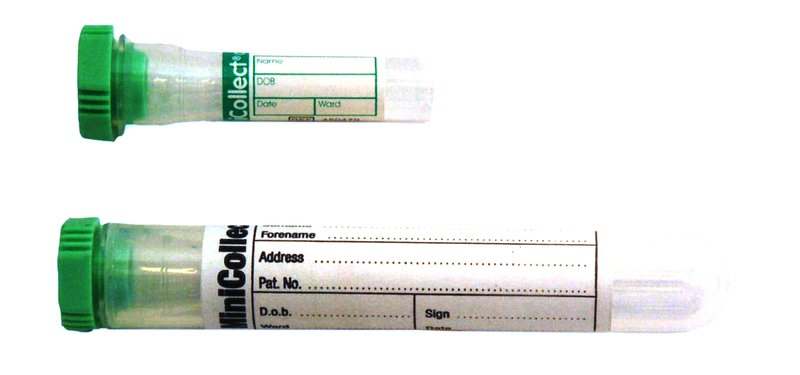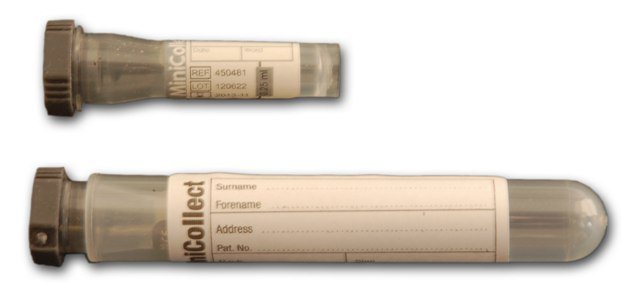Insulin
Chemical Pathology
Notes
Insulin concentrations are severely reduced in insulin-dependent diabetes mellitus (IDDM) and hypopituitarism, but are raised in non-insulin dependent diabetes mellitus (NIDDM), obesity, insulinoma and certain endocrine conditions such as Cushing's syndrome and acromegaly.
Insulin is indicated for the investigation of unexplained hypoglycaemia (fasting blood glucose < 2.5 mmol/L), and is occasionally requested by the paediatricians when performing a glucose tolerance test to investigate insulin resistance states.
Insulin is normally measured in the fasting state and should always be interpreted in the light of the current glucose level.
Sample requirements
Insulin requests require a simultaneous laboratory blood glucose request so a grey top fluoride-oxalate tube for glucose should be sent as well as the following tube types:
For adults, blood taken into 1) 5mL gold top tube (or rust top for the Acute Unit) and 2) 2mL fluoride-oxalate tube
1.

2.

For children, blood taken into 1) 3.5mL rust top tube and 2) 2mL fluoride-oxalate tube
1.

2.

For neonates, blood taken into 1) 0.8mL minicollect ithium heparin tube and 2) 0.25mL minicollect fluoride-oxalate tube
1mL minicollect fluoride-oxalate tube
1.

2.

Storage/transport
Do not store. Send immediately to the laboratory at ambient temperature.
Required information
Relevant clinical details including reason for the request.
Turnaround times
The samples are sent frozen by courier to the referral laboratory at The Royal Surrey County Hospital, Guildford with results expected back within 2 weeks.
Reference ranges
For insulinoma investigations in an adult, an Insulin level greater than 25 pmol/L (and a C-Peptide greater than 75 pmol/L) may be consistent with a diagnosis of insulinoma, in the presence of laboratory confirmed hypoglycaemia (simultaneous fasting plasma glucose level of < 2.5 mmol/L).
Further information
To learn more about insulin visit Lab Tests Online or access the insulin monograph of the Association for Clinical Biochemistry and Laboratory Medicine.